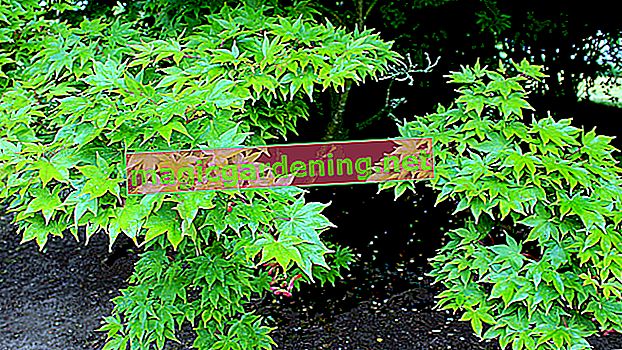
The Japanese maple in a nutshell
- Botanical name: Acer japonicum
- Genus: Maples (Acer)
- Family: Soap Tree Family (Sapindaceae)
- Popular names: Thunberg's Japanese maple
- Origin and distribution: Japan (mainly Hokkaido and Honshu) as well as the east Chinese provinces of Jiangsu and Liaoning
- Location: sunny to partially shaded
- Growth habit: shrub or small tree
- Growth height: up to 10 meters, but mostly much smaller
- Flowering and flowering period: purple flowers between April and May / May and June
- Foliage: seven to nine lobes, mostly green
- Autumn color: very intense red to orange-red
- Propagation: cuttings
- Winter hardiness: most varieties are very hardy
- Toxicity: no
- Use: as an ornamental plant in the garden or as a container
- Similar species: Japanese maple (Acer palmatum), golden maple (Acer shirasawanum)
Diverse Japanese maples
The Japanese maple (Acer japonicum) originally comes from the mountain forests of the Japanese islands of Hokkaido and Honshu, where in old age it can reach heights of growth of up to ten meters and crown widths of between five and six meters. With us, the rather slowly growing tree remains significantly smaller. Mainly the monkshood Japanese maple ('Aconitifolium') and the vine-leaved Japanese maple ('Vitifolium') are available in stores. In addition, the names “Japanese maple” or “Japanese maple” summarize various species that are not identical to Acer japonicum, but are very closely related. These include above all the Japanese maple (Acer palmatum) and the gold maple (Acer shirasawanum).
also read
- Japanese maples are usually easy to overwinter
- Japanese maple - Recommended types and varieties
- Japanese maple - little growth per year
Japanese maples impress with their blaze of color
All Japanese maples are very suitable for small gardens due to their rather slow growth and can also be cultivated in sufficiently large containers with little effort. Furthermore, the filigree leaves have an impressive autumn color, which - depending on the variety and location - can be orange, yellow-red or bright scarlet. Some Japanese maples also show a pretty red color during the spring shoots, while the summer leaves are mostly fresh green.
Tips
The sunnier and more sheltered the location, the more intense the autumn color. However, this rule of thumb cannot be applied to all Japanese maples, because some species and varieties cannot tolerate direct and intense sunlight.








